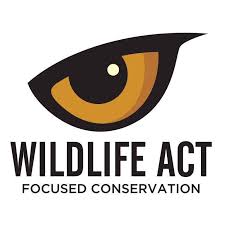Wildlife Act – Essay Composition – For W.B.C.S. Examination.
The flair of understanding literature is required. The knowledge of English is one aspect but critically examining the literary aspect is another or different angle to understand literature. If you are a beginner, you can start with summary of the stories with the help of following books. But, these are strictly recommended as supplementary books to develop interest or just to start.English is a very important part of W.B.C.S. Examination , covering a fair amount of the syllabus both in the prelims and the mains examination.English is full of confusing words that sound alike but are spelled differently.Regular practice and following previous years question papers can help in scoring a fair amount of marks in the W.B.C.S. Examination.Wild animals are the integral part of the ecosystem performing a vital role in maintaining food chain and food web. Thus, their existence and survival on the earth planet is so important and essential for the natural balance and also for the existence of human life.Continue Reading Wildlife Act – Essay Composition – For W.B.C.S. Examination.
India is an under developing country facing many problems like tremendous growth in human population, poverty, unemployment, illiteracy and unawareness towards wildlife and nature. As a result, there is lot of pressure on forest and wild animals. Encroachment of forest land converting it into agricultural field, illicit felling of trees, illegal hunting and poaching, smuggling and merciless killings of wild animals have resulted in dwindling population of wild animals and shrinkage of their habitats.
Several species have been brought to the endangered/threatened category, many are on the verge of extinction surpassing the stage of critical limit, and extinction of many important species has taken place. Therefore, the forest personnel as well as people should have holistic view and approach in forest activity whether it is tree and/or wild animal.
In the year 1800, for the first time in India, the exploitation of wildlife was started on scientific basis. In 1806, first Forest Conservator was appointed at Madras Presidency. In 1847, an eminent botanist was appointed as Forest Conservator at Bombay. In 1855, the administrative structure of Forest Department was framed. In 1864, Sir Brandis became the first Forest Inspector General. In 1887, first systematic law in India was enacted by the British called “Wild Birds’ Protection Act of 1887”.
But due to wanton killing of wild animals and birds, a comprehensive legislation was passed, i.e., “Wild Birds and Animals (Protection) Act, 1912”. Again in 1935, the Act was amended calling it “Wild Birds and Animals (Protection) Act, 1935”. All these laws were aimed at not hunting the game animals and trade in products derived from wild animals. Much attention was not taken in conserving and propagating the wild animals throughout the country.
Before independence, the protection of wildlife was the responsibility of native rulers and local forest officers under the Indian Forest Act, 1927. There was rapid depletion in the population of wild animals. British rulers realised the importance of conservation of wildlife and enforced various laws like Rhino Protection Act, Elephant Protection Act, Arms Act, etc., from time to time to save them.
During Second World War the wild animals were mercilessly hunted by the soldiers and army officers wherever they halted. Bombay Natural History Society (BNHS), a private agency, established in 1883 took the first step in formulating a comprehensive Act for Bombay in 1951 called Bombay Wild Animals and Wild Birds Protection Act, 1951. After independence, in 1952 an advisory board calling Central Board for Wildlife was set up, which was renamed as Indian Board for Wildlife (IBWL).
Later Wildlife (Protection) Act, 1972 was formulated to conserve and propagate the wild animals with the salient provisions of creating sanctuaries and national parks as well as penalties against illegal hunting, poaching and trading, etc. The Act provides legal protection to the wildlife and to the endangered species of fauna listed in different Schedules.
This Act has been amended in 1982, 1986, 1991 and 1993. Amendment in 1991 has imposed total ban on hunting, constituted Central Zoo Authority, recognition of zoos, emphasising protection of plants, etc., amendment of certain sections, omission of words such as Special Game, Big Game and Small Game from the Schedules, addition of one more Schedule VI enlisting certain plants.
Please subscribe here to get all future updates on this post/page/category/website


 Toll Free 1800 572 9282
Toll Free 1800 572 9282  mailus@wbcsmadeeasy.in
mailus@wbcsmadeeasy.in



















































































































